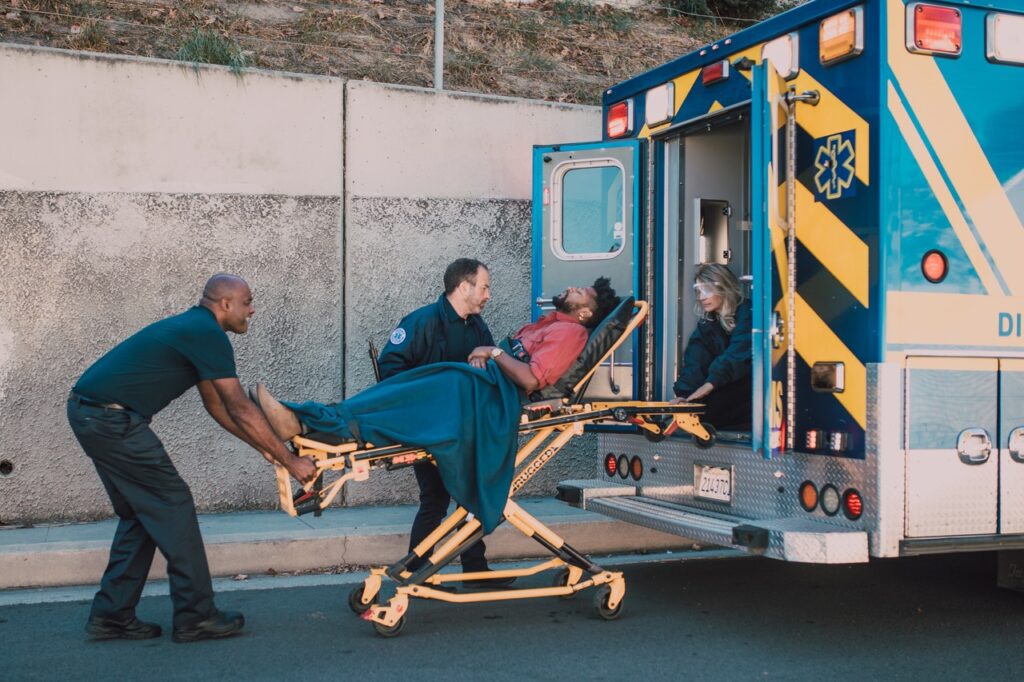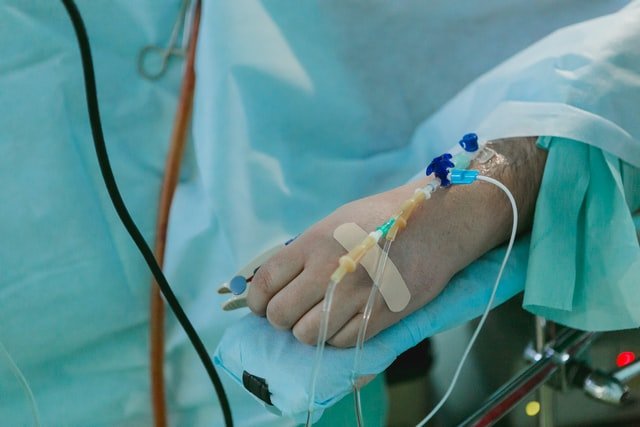- Home
- Addiction Treatment
- Dual Diagnosis
- Alcohol Related Death
Alcohol Related Death
Alcohol is very much a common sight in the UK.
Whether we partake of it or not, it is likely that we will come into contact with alcohol – even if just on a shelf at the supermarket- almost every day.
This abundance, as well as its widespread social encouragement, can make alcohol seem harmless.
However, alcohol can be just as deadly as any drug.
Statistics: Hospitalisation and Mortality Rates

Alcohol-related deaths include health conditions from alcohol abuse, such as alcoholic liver disease, and alcohol-related accidents.
In 2020, around 14 people in every 100,000 died from an alcohol-related condition or accident.
This was around 8,974 deaths, an 18.6% increase from the years 2018/19.
The statistics for both men and women are higher than that of previous years, with Scotland and Northern Ireland having the highest rates of alcohol-related deaths in 2020.
In 2020, over 5,957 men and over 3,017 women died from alcohol related deaths.

Men are twice as likely to die from an alcohol-related death than women are (9.2 in every 100,000 people).
The common causes of alcohol-related deaths can be clearly divided:
- 8% of alcohol-specific deaths in 2020 came from alcoholic liver disease
- 1% of alcohol-specific deaths in 2020 were the result of mental and behavioural disorders from alcohol abuse
- Over 6.2% of deaths relating to alcohol were the result of external causes, such as accidental poisoning from alcohol
The highest rates of deaths came from the ages between 50 and 59, the majority of which are attributed to alcoholic liver disease.
Rates In Individual Countries
![]()
In 2020, there was a clear distinction between the rates of alcohol-related deaths in each individual country within the UK:
- Scotland: 21.5 deaths per 100,000 persons
- Northern Ireland: 19.6 deaths per 100,000 persons
- Wales: 13.9 deaths per 100,000 persons
- England: 13 deaths per 100,000 persons
When this was compared to the rates from 2019, the largest increases in deaths were seen in both England (+19.3%) and Wales (+17.8%).
English Regions

6 of the regions in England saw a significant increase in alcohol-related deaths in 2020, ranging from 9.2 in 100,000 in the East of England, and 20 in 100,000 persons in the North East of England.
The North East is now on its seventh consecutive year of being the highest rate of any English region.
Areas with significant increases in death rates include:
- The West Midlands, which saw an increase of 33.1%, going from 12.1 to 16.1 deaths in every 100,000 people.
- The South West, which increased by 32.2%, increasing from 8.7 in 100,000 deaths to 11.5 deaths in every 100,000 people.
- London saw an increase of over 25%, with an increase from 7.9 to 9.9 deaths per 100,000 persons. London also saw the most male to female ratio increase, as has been the case for almost two decades now. In 2020, the male rate was three times higher than the rate of female deaths.
- The North East increased by over 20%, from 16.6 to 20 deaths per 100,000 people.
- The North West went from 14.4 to 17.2 alcohol-related deaths per 100,00 people, an increase of over 19.4%.
- The South East of England increased by 18.5%, going from 9.2 to 10.9 deaths every 100,000 people.
Alcoholic Liver Disease

Alcoholic liver disease is the biggest contributor to alcohol-related deaths, namely in 2020.
Alcoholic liver disease causes serious damage to the liver, hampering its major functions as a result of alcohol abuse.
The liver has a variety of functions, such as detoxing the blood and producing nutrients for digestion.
There are three main stages of alcoholic liver disease:
- Fatty liver disease: This stage is where you have a build-up of fat on your liver, usually seen in those who are overweight or classed as obese. Early stages of fatty liver do not usually cause significant harm, but it can lead to alcoholic hepatitis and cirrhosis with is irreversible.
- Alcoholic hepatitis: Alcoholic hepatitis is an inflammation of the liver, caused by excessive alcohol consumption over an extended period. Binge drinking is a specific cause of this condition, but if you stop drinking the condition can gradually get better. The first signs of alcoholic hepatitis is pain in the area of the liver, accompanied by fatigue and loss of appetite. There is no cure for alcoholic hepatitis, but treatment can restore partial function.
- Fibrosis and cirrhosis: Cirrhosis is excessive scarring of the liver, and is long-term liver damage. This is end-stage liver disease, stopping the liver from working properly. As your liver gets worse, you may feel tired, sick and lose weight gradually. You may experience jaundice and itchy skin.
There is no cure for cirrhosis, but it is manageable.
Each individual has a different make-up, but complications can develop after abusing alcohol for around 5 to 10 years.
It commonly takes 20 to 30 years to develop the full conditions, but it depends on how much alcohol you drink and how often you consume on a weekly basis.
How Much Alcohol Causes Liver Disease?

Binge drinking is defined as drinking more than 5 drinks (men) or more than 4 drinks (women) on one occasion.
Binge drinking is not necessarily the result of a severe alcohol use disorder, but is associated with injuries and diseases such as alcoholic liver disease.
The NIAAA states that binge drinking is a constant pattern of high blood alcohol concentration.
This is classed at 0.008% or higher, normally over 5 drinks.
It is recommended that you don’t drink more than 14 units of alcohol per week, usually spread across 3 days.
That is around 6 medium glasses of wine a week, or 6 pints of 4% beer over the course of the week.
Do I Have a Drinking Problem?

FAST is an alcohol screening questionnaire, identifying alcohol use disorders.
FAST was originally developed for A&E departments but is now used regularly in health care settings.
FAST is comprised of 10 questions; you answer the first 4 questions first, and if you score FAST+ you ought to complete the rest of the 6 questions.
- How often have you had 6 or more units if female or 8 or more if male, on a single occasion in the last year?
- How often during the last year have you failed to do what was normally expected from you because of your drinking?
- How often during the last year have you been unable to remember what happened the night before because you had been drinking?
- Has a relative, friend, doctor or other health worker been concerned about your drinking or suggested that you cut down?
- How often do you have a drink containing alcohol?
- How many units of alcohol do you drink on a typical day when you are drinking?
- How often during the last year have you found that you were not able to stop drinking once you had started?
- How often during the last year have you needed an alcoholic drink in the morning to get yourself going after a heavy drinking session?
- How often during the last year have you had a feeling of guilt or remorse after drinking?
- Have you or somebody else been injured as a result of your drinking?
Scoring:
- 0 to 7 indicates low risk
- 8 to 15 indicates an increasing risk
- 16 to 19 indicates higher risk
- 20 or more indicates possible dependence

You may have an alcohol use problem if:
- You struggle cutting down or have previously tried quitting alcohol but failed
- You have been questioned by friends and loved ones about your drinking habits
- You have felt embarrassed or angry about your consumption or behaviour
- You have used alcohol to wake up or get over nerves
Alcohol holds an important role in social engagements and is holds importance in social bonding.
It is deemed pleasurable and ‘fun’, but it is a depressive in reality.
It is linked to a number of negative outcomes such as disease, accidents and death.
Support Groups: AA

Alcoholics Anonymous and other therapy support groups have been proved to be effective and have stood the test of time.
You meet with anonymous individuals who are also suffering from alcoholism and provide support for one another.
You pass around your experiences with drinking, along with triggers and anxieties regarding alcohol.
The recovery program is formed of 12 steps, originating from the earliest experiences of the members of the founding group:
- We admitted we were powerless over alcohol – that our lives had become unmanageable.
- Came to believe that a Power greater than ourselves could restore us to sanity.
- Made a decision to turn our will and our lives over to the care of God as we understood Him.
- Made a searching and fearless moral inventory of ourselves.
- Admitted to God, to ourselves and to another human being the exact nature of our wrongs.
- Were entirely ready to have God remove all these defects of character.
- Humbly asked Him to remove our shortcomings.
- Made a list of all persons we had harmed and became willing to make amends to them all.
- Made direct amends to such people wherever possible, except when to do so would injure them or others.
- Continued to take personal inventory and when we were wrong promptly admitted it.
- Sought through prayer and meditation to improve our conscious contact with God as we understood Him, praying only for knowledge of His will for us and the power to carry that out.
- Having had a spiritual awakening as the result of these steps, we tried to carry this message to alcoholics and practice these principles in all our affairs.
Although these original 12 steps have a significant religious element, modern Alcoholics Anonymous groups are more spiritual than religious, and anyone is welcome to join regardless of faith.

Only the person suffering from alcohol abuse can determine whether they can be classed as an alcoholic, and this self-acceptance is a very important first step.
However, medical professionals understand that alcoholism is a progressive disease and needs to be kept under control so it does not become degenerative.
There are many other support groups available to you, and some will be more suited than others.
Reach out to us today for clarification on groups near you.
The more research you do the more likely you are to find the right help you need.
Get The Help You Need Today

Alcoholism can be deadly, but it doesn’t have to be.
If the right help is provided at the right time, there is no addiction too strong to beat.
We are here to help clarify your options, guide you toward the most appropriate treatment providers, and provide emotional support throughout the recovery process.
To take that first step on the road to recovery, contact our free helpline today.


